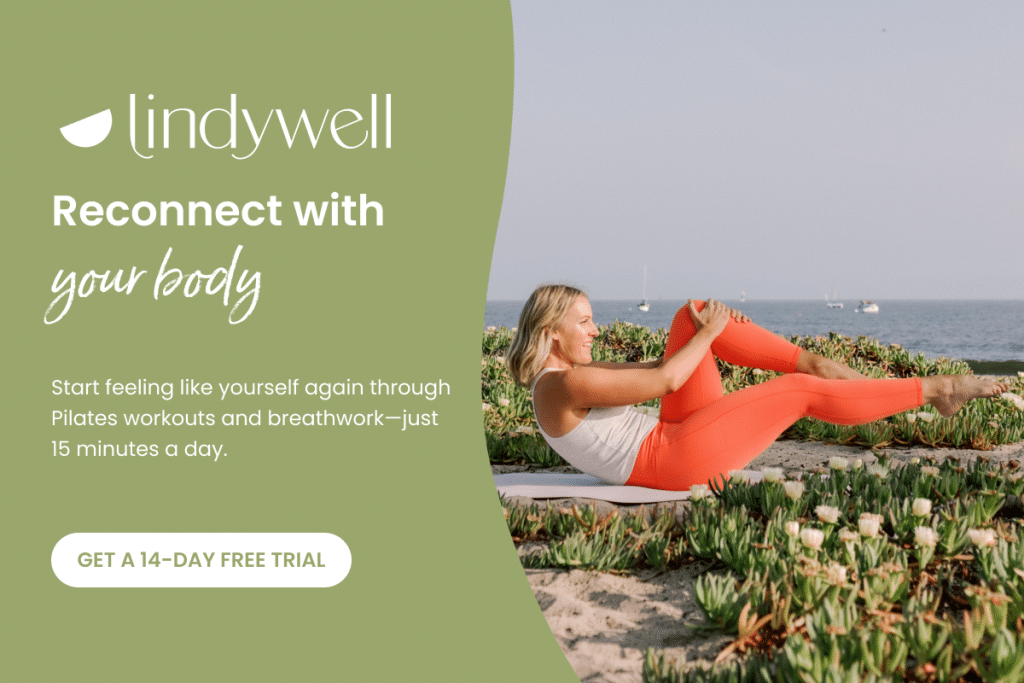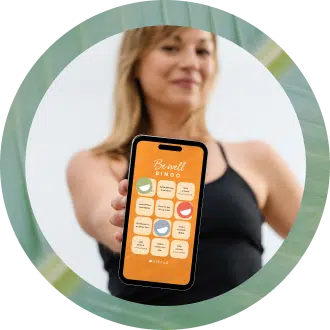
Setting boundaries in relationships isn’t easy—and there are several misconceptions about what setting boundaries actually means. You might hesitate to form boundaries in your career, romantic relationships, or friendships because you assume this will make you come across as unreliable, selfish, or inconsiderate.
You’re afraid to push others away, turn down opportunities, and fall short of expectations, so you just continue showing up—often to your own detriment. A recent survey found that 65 percent of women have trouble saying, “No,” to a request or invitation they don’t want to be part of.
I know I’ve done this before and I’m sure you have too. It doesn’t feel good—and yet, it feels impossible to just do what you actually want to do. So you stay stuck in that cycle.
The truth is that setting healthy boundaries in relationships is an essential form of self-care and, as a result, is critical for your overall health and wellness. Let’s unpack what setting boundaries means (hint: it might not be what you think!) and the benefits of creating them for both your physical and mental health.

Understanding What Healthy Boundaries Mean for Your Health
First and foremost, I want to be clear on what I mean when I say “setting boundaries.” For me, setting a boundary is about determining what I want or need and then making a decision about how to achieve that for myself. Boundaries give us permission to:
- Honor our own limits
- Restore our inner peace and balance
- Determine where we should invest our time and energy
- Notice what doesn’t serve us
- Trust ourselves to know exactly what we need
In other words, boundaries aren’t always necessarily meant to keep people out or push people or experiences away. They’re more about tuning into what you need and honoring that deeply and completely.
Believing the latter is true might be why setting boundaries feels uncomfortable. You fear that you’ll sabotage your relationships or environments that matter to you.
The truth is, the more you learn to establish, communicate, and maintain boundaries, the more full and complete all areas of your life will start to feel. You’ll also feel less resentment toward other people and situations in your life.
Here are great things that boundaries can do for you:
- Make it easier to clarify and align with your main priorities.
- Help you distinguish your own needs, thoughts, and emotions from those of others.
- Help you release responsibility for someone else’s expectations.
- Reinforce confidence, resilience, and a clear sense of identity.
- Ensure that your time and resources are being allocated intentionally.
- Promote healthy conflict resolution to enrich your relationships.
- Recharge your mental, emotional, and physical batteries.
- Nurture self-respect by communicating what you will not tolerate.
Different Types of Boundaries for Your Many Relationships
Relationship boundaries strengthen your connections with both people and things in your life. These boundaries can take many forms and each one can create more space for your authentic self to flourish and intentional, mindful living to take root.
Notice how I’m not just referencing relationships with other people. There are many ways I’ve set boundaries in my relationships, yes with people like friends or partners, but also with technology and work—and so much more. You have a relationship with both things and people in your life—and being clear with how they play a role in your life is powerful.
Let’s break down some different types of boundaries and how you can set them in your own life.
Emotional Boundaries
Emotional boundaries allow for a healthy relationship. They ensure that you’re safe to communicate how you feel without taking on the emotions of others. These boundaries will help you set the emotional investment you’re able to put forth so you can pull back to regulate your emotions and return to a state of balance.
Setting an emotional boundary in a situation or with a person also empowers you to combat false narratives about yourself. In turn, you can begin to release the expectations, insecurities, and negative beliefs or reactions. Here are some examples of healthy emotional boundaries:
- I won’t tolerate being spoken to disrespectfully.
- I’m not comfortable discussing my past traumas with someone I just met.
- I need some space to process my feelings before discussing that topic further.
- I won’t take responsibility for someone else’s emotions.
- I’m going to focus on my own needs and self-care right now.
I know this can be really hard, especially if you haven’t set boundaries in the past. But, by practicing little by little, it will get easier and be worth it in the end.”
Physical Boundaries
Physical boundaries establish a comfortable, protective barrier around your own space or body, from choosing to rest when you’re tired to telling a friend when you need space. These boundaries reinforce a compassionate, self-aware, and intuitive connection with your own body, which helps you develop deeper self-trust.
For example, a physical boundary could be to establish alone time or even a physical space within your home where you can retreat for solitude and relaxation, such as a reading nook or a home office.
Remember, you’re allowed to ask for personal space, even if you’re in a romantic relationship, live with roommates, or have children.
Work-Life Boundaries
Work-life boundaries create a firm separation between your personal and career obligations. An intentional work-life balance prevents the time you spend on the job from blurring into the time you allocate toward self-care and family activities.
A good example of this might be a time boundary: turning off your email notifications right at 5 PM. While a lack of boundaries in this area can lead to exhaustion and burnout, a healthy work-life balance will improve your mental health, reduce stress levels, and increase happiness.
I know this is something you’ve heard before—but do you actually set and respect those boundaries?
Technology Boundaries
Technology boundaries help you establish restrictions on smartphone usage, so you can unplug from virtual screens and connect with the real world. I know that if I’m not intentional about this, I’ll check my phone continually throughout the day without even thinking about it.
This is a chance to set some guidelines for when you want to be on your phone or how much time you want to spend on social media. Putting physical space between yourself and these aspects of your life can help you better align with the self-care you want to give yourself.
Interestingly, a two-week detox from social media was found to result in less anxiety, stress, sleep disturbances, and even sedentary habits. If those are goals for your life, a digital detox or better tech boundaries are a good thing to consider.
Putting Boundary-Setting into Practice
Now, we get to the part that might feel the hardest—drawing the line in the sand and setting those clear boundaries. Here’s an exercise you can use to take the emotion of this practice and instead, focus on what you need and how you can make it possible.
Take a piece of paper and draw two lines down it so you have three columns. Fill them out as follows:
Column 1: Identify how you want to take better care of yourself. Coming back to self-care and what is getting in the way of that. Start with 5-10 things that your mind and body is craving. Maybe it’s more nutritious food options during the week or extra quiet time before or after work.
Column 2: Determine what’s getting in the way of those things. Write this in column two next to each thing. Maybe you’re eating out for lunch each day, rather than making yourself a nutrient-dense lunch because you’re not giving yourself the time to get to the grocery store. Write that down.
Column 3: In the last column, write what small action you can take to set a healthy boundary and give yourself the thing you’ve been needing. Be realistic here—this isn’t about magically creating more hours in the day. It’s about doing what you can with what you have.
Finally, choose 2-3 of these things that you can start doing this week. Set those boundaries, get a little uncomfortable as you put them in place, and see what happens. With a little practice, setting boundaries will get easier—and you’ll feel good too!
Communicating Boundaries (With Yourself and Others)
Effective boundary-setting with others requires clarity, consistency, communication, and assertiveness. Clearly articulating your boundaries helps to avoid misunderstandings and conflicts.
I want you to remember that being assertive doesn’t mean being aggressive or confrontational. It’s about expressing your needs and limits firmly but respectfully, while also being open to negotiation and compromise when appropriate.
For example, if you repeatedly experience a boundary violation, it’s necessary to calmly but firmly reassert what you need, perhaps with additional clarification if necessary. It might even be necessary to put space between you and the person who’s violating your boundary to protect yourself and your mental health.
Just as important as communicating to others is holding healthy boundaries for yourself. This requires you to not only recognize your own limits, needs, and desires—but also keep yourself accountable to prioritizing those things.
In doing this, you empower yourself in other areas of your life too, which allows you to further set boundaries that are needed as your life changes and evolves.
Strengthen Your Boundaries and Nurture Self-Care with Lindywell
Healthy boundaries in your relationships with people, technology, and work make it possible to regulate emotions, maintain inner peace, successfully navigate relationships, restore energy levels, and, ultimately, prioritize your own self-care. Boundaries are about more than just saying, “No,” to what doesn’t serve you. Boundaries also free you up to offer a resounding, ”Yes!” to what feels most important in each season of life.
To prioritize your well-being in a way that is easy and convenient, I invite you to become a part of our community at Lindywell. Join now and get 14 days free! As a member, you’ll gain instant access to more than 350 Pilates classes, guided breathwork sessions, and nourishing recipes. Shift into grace over guilt while you make time for YOU.









4 thoughts on “Why Setting Boundaries in Relationships is So Hard and How to Do It Anyway”
I loved this blog post. I’m only just learning that it’s OK to set boundaries but still fear upsetting people if I do. One person in particular would lash out and I fear that more than giving in to situations I’d like to avoid. But this blog helped to strengthen my resolve to keep trying. Thank you!
I’m not a member of the Lindywell community yet because my life is too garden centred right now but I’m planning on joining in the fall. I hope you sill still have some great special offers then!8
Thank you for your comment and for sharing, Helen! We’re so glad that this post resonated for you and has helped to encourage you. We look forward to welcoming you to Lindywell when the time is right for you!
The truth is that setting healthy boundaries in relationships is an essential form of self-care and, as a result, is critical for your overall health and wellness. Let’s unpack what setting boundaries means (hint: it might not be what you think!) and the benefits of creating them for both your physical and mental health.👌 Absolutely correct and excellent
sarayevarzeshi.ir
💗